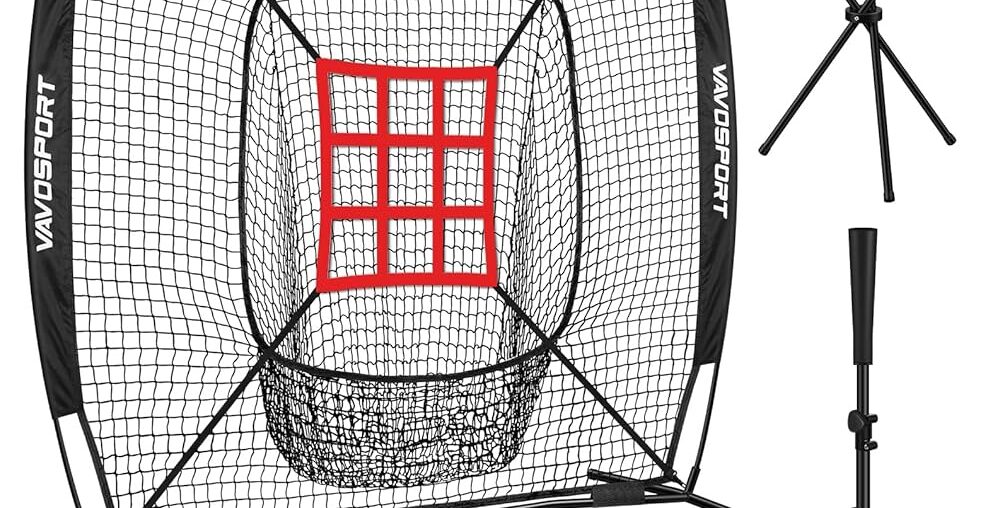Baseball, often considered America’s pastime, is a sport that requires precision, skill, and practice to master. Whether you’re a professional athlete, a weekend player, or someone just learning the game, certain equipment plays a crucial role in both improving performance and ensuring safety. One such piece of equipment is the baseball net. Though seemingly simple, baseball nets are essential tools for training, safety, and enhancing overall gameplay experience.
In this article, we’ll explore the importance of baseball nets, their different types, and why every player and coach should consider incorporating them into their training routines.
What Is a Baseball Net?
A baseball net is a large mesh structure designed to catch baseballs during practice. These nets serve a variety of purposes, from preventing balls from going astray during drills to providing a safer environment by containing balls during high-speed throwing exercises. They come in various shapes and sizes, often tailored to specific uses, whether for batting, pitching, or fielding drills.
Types of Baseball Nets
There are several different types of baseball nets, each serving specific functions for different drills. Here are some of the most common variations:
1. Batting Cage Nets
One of the most widely recognized types of baseball nets is the batting cage net. Batting cages are essential tools for improving batting skills and offering players a controlled environment to practice their swings. Batting cage nets are typically large and strong, capable of withstanding the force of repeated hits.
These nets are generally installed in a framework of poles and are designed to catch balls hit at high speeds. They come in both indoor and outdoor varieties, with outdoor versions often treated to withstand the elements, ensuring longevity and durability. Batting cage nets can be used for individual practice or team drills, making them a versatile addition to any baseball facility.
2. Pitching Nets
Pitching nets are another essential tool for baseball players. These nets are typically smaller in size compared to batting cage nets but still serve a critical role in training. Pitching nets are designed to help pitchers work on their accuracy, speed, and technique. Often used in bullpen drills, pitching nets allow pitchers to practice without the need for a catcher.
Some pitching nets come equipped with targets that pitchers can aim at, allowing for focused practice on hitting specific zones or areas of the strike zone. This type of net helps players hone their skills while also reducing the need for extra players during practice sessions.
3. Softball and Baseball Backstop Nets
Backstop nets, sometimes referred to as rebounder nets, are used in both baseball and softball. These nets are designed to catch balls that are thrown or hit in an unpredictable manner, ensuring that they don’t roll too far away from the player. Backstop nets are typically used in fielding drills, providing a controlled environment to practice ground balls, pop flies, and other fielding techniques.
These nets are portable and can be easily set up in any field or open space, making them an ideal option for individual and group practices. Due to their flexibility and design, backstop nets are suitable for both baseball and softball players.
4. Bullpen and Fielding Rebounder Nets
Rebounder nets are great for improving both fielding and pitching skills. These nets are designed with a bounce-back feature, which helps players practice their reaction times and fielding techniques. A ball that hits the net will rebound in a controlled way, allowing fielders to react quickly and catch the ball or perform a throw.
Rebounder nets are small, portable, and often come in different angles and sizes. They are excellent tools for fielding practice as they help athletes work on both their glove hand and throwing arm.
Benefits of Baseball Nets
1. Improved Training Efficiency
Baseball nets allow players to practice more efficiently by minimizing distractions. Without a net, practicing in a large open area means players spend time chasing after stray balls. By using a net, players can focus on their drills, whether it’s swinging for batting practice or throwing pitches. This increases the amount of productive practice time and maximizes skill development.
2. Enhanced Safety
Safety is a significant concern in any sport, and baseball is no exception. With balls flying at high speeds, it’s easy for players, coaches, or spectators to get injured if proper precautions are not in place. Baseball nets help reduce the risk of injury by preventing balls from flying outside the designated practice area.
Nets also provide protection for coaches, umpires, and other players on the field. By containing balls within a controlled space, players are less likely to get hit by errant throws or foul balls.
3. Cost-Effective Training Solution
For coaches and teams, baseball nets offer a cost-effective way to conduct practice sessions. Without the need for a catcher or multiple participants, players can practice individually. This reduces the need for additional personnel, saving time and money.
Additionally, many baseball nets are designed to be durable and long-lasting, meaning teams don’t have to replace them often. Given the low maintenance and high durability, investing in a quality net can be an economical choice for any team or player.
4. Versatility
Baseball nets are incredibly versatile. They can be used in various training scenarios, from batting practice to fielding drills to pitching practice. Furthermore, many nets are portable, meaning they can be moved and set up in different locations depending on the need. Whether you’re at a park, training field, or at home, baseball nets can be used in almost any environment.
Choosing the Right Baseball Net
When selecting a baseball net, there are several factors to consider:
- Durability: Ensure the net is made from high-quality materials, such as nylon or polyester, to ensure it can withstand the force of fast-moving balls without tearing.
- Size: Choose a net size that fits the type of practice you intend to do. Batting cages typically require larger nets, while pitching nets and rebounders can be smaller and more portable.
- Portability: If you plan to move the net around frequently, choose a lightweight, portable option. Some nets come with carrying bags for added convenience.
- Weather Resistance: If you plan to use the net outdoors, make sure it’s designed to resist weather elements like rain, UV rays, and wind.
Conclusion: The Value of Baseball Nets in Modern Training
In conclusion, baseball nets are a crucial tool for improving skills and ensuring safety during practice sessions. From batting cage nets to pitching rebounders, these nets provide a controlled, efficient, and safe environment for players to develop their abilities. Whether you’re a seasoned professional or a beginner, incorporating a baseball net into your training routine is essential to refining your skills and maximizing your performance.
Investing in a high-quality baseball net will not only improve your practice sessions but also contribute to your overall development as a player. Whether used in a professional baseball facility or in your own backyard, baseball nets are a valuable tool that will help players of all levels get the most out of their training time.



